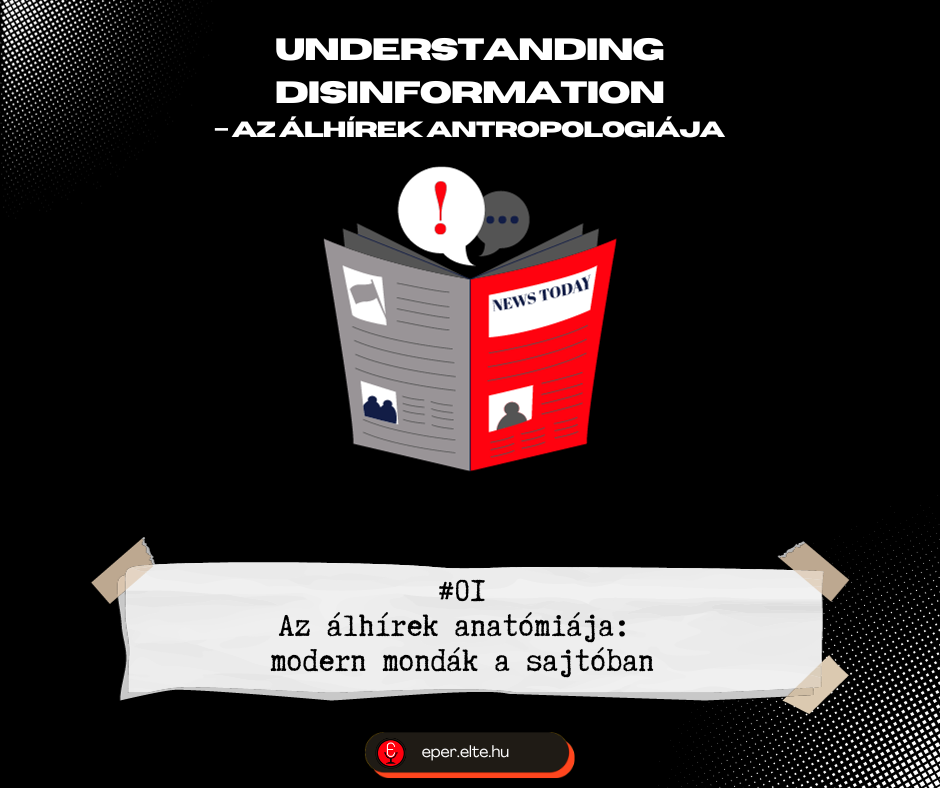
Videó: Az álhírek anatómiája: modern mondák a sajtóban
Egyre nehezebb szelektálnunk a hiteles és a félrevezető források között. Az álhírek soha nem látott mértékben terjednek. Műsorunkban Dr. Tamás Ildikó, nyelvész és folklórkutató (HUN-REN BTK Néprajztudományi Intézet) néhány híres eseten keresztül vezeti be a hallgatót a dezinformáció mechanikájába és motivációiba. A beszélgetésből kiderül, milyen összefüggés van az álhírek, a pletykák és a folklór között.
*
Understanding Disinformation – #01 The anatomy of Fake News: modern tales in the Press
It is getting progressively harder to navigate between the genuine and misleading sources. Fake news spread by an unprecedented rate. In this episode Dr. Ildikó Tamás, linguist and folklore researcher, introduces the mechanics and motivations of disinformation through a few notable and famous incidents. In this conversation we find out how disinformation and gossip become folklore overtime and shape the community’s conversations and culture.
Tartalom:
00:00 – Intro
00:24 – Szüksége van az embereknek babonákra?
02:43 – Milyen kevésbé átlátható részei vannak az ember életének?
08:46 – A mondák tanmesék vagy az ismeretlentől való félelem megmagyarázása?
14:35 – Van-e szimbolizmusa annak, hogy bizonyos történetek megjelennek modern környezetben?
18:47 – Média és a babonák
20:17 – Mi a sajtó célja a babonák reprezentálásával?
21:59 – Milyen példák vannak erre?
29:03 – Pletykák és mondák
31:45 – Hogyan tudunk védekezni a hiedelmek, pletykák ellen?
További tanulmányok álhírekről, mondákról:
Mikos Éva: Idegenek az ételünkben. Kereskedelmi mondák a 20-21. század magyar sajtójában
Mikos Éva: Krokodil a csatornában. Egy újságmonda filológiája
A beszélgetés podcast formájában is meghallgatható: itt
A tartalom a DISARMING DISINFORMATION és a PERSPECTIVES projektek támogatásával készült.
This content was produced with the support of the Disarming Disinformation and PERSPECTIVES projects.
This article was published as part of PERSPECTIVES – the new label for independent, constructive and multi-perspective journalism. PERSPECTIVES is co-financed by the EU and implemented by a transnational editorial network from Central-Eastern Europe under the leadership of Goethe-Institut. Find out more about PERSPECTIVES: goethe.de/perspectives_eu.
Co-funded by the European Union. Views and opinions expressed are, however, those of the author(s) only and do not necessarily reflect those of the European Union or the European Commission. Neither the European Union nor the granting authority can be held responsible.
A PERSPECTIVES projektben, nemzetközi partnereink által készített tartalmakat itt találjátok.

